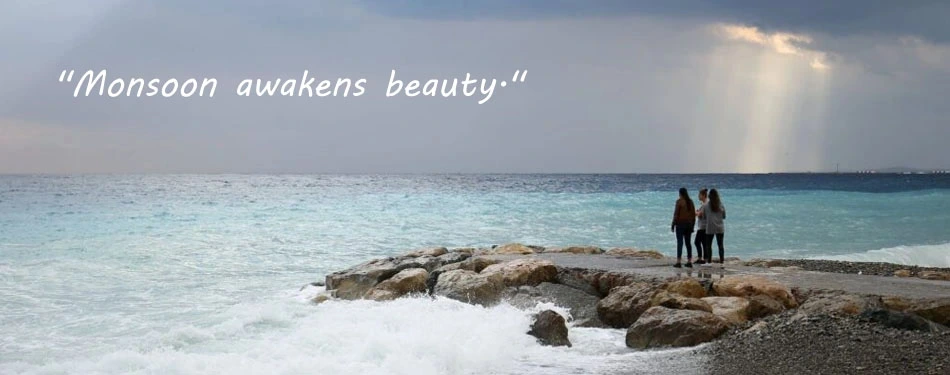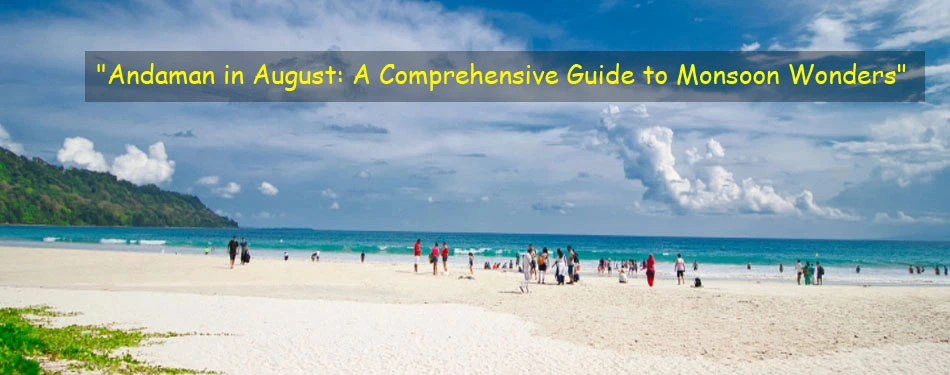Andaman in August: Your Complete Guide to Monsoon Magic

August in Andaman is not your typical vacation scenario. For those who are willing to
embrace its monsoon magic, the Andaman Islands in August offer a unique allure with its
lush greenery and vibrant culture, setting it apart from other popular destinations
where most tourists come to soak in the sun. Here, we will talk about why August can be
a good time to visit Andaman, the weather conditions you can expect, and highlight some
must-visit spots like Havelock Island during this time of the year.
What is the Monsoon Season in Andaman
The monsoon season in Andaman typically begins in late May and extends until September.
August, being in the heart of the monsoon, experiences substantial rainfall. However,
it's precisely this rainfall that transforms the archipelago into a verdant paradise,
perfect for those who appreciate the beauty of nature in its most vibrant form.
Weather of Andaman in August
When planning a trip to Andaman in August, it's important to understand what the kind of
weather will be. The weather of Andaman in August is characterized by heavy showers
interspersed with brief periods of sunshine. Temperatures during this time are generally
pleasant, hovering around 25°C to 30°C. The rain, though frequent, usually falls in
intense short bursts, after which the sun often makes an appearance.
This unique weather pattern not only cools down the temperature but also enhances the
scenic beauty, making the forests lush and waterfalls more majestic. For those who don't
mind getting a bit wet, the weather of Andaman in August provides a refreshing escape
from the otherwise hot climate found in many parts of India during this time.
Why August Can Be a Good Time to Visit Andaman
Choosing August for your Andaman trip might seem unusual due to the rain, but there are
several reasons why it can be a good time to visit Andaman. Firstly, the island is less
crowded, allowing for a more relaxed experience. This decrease in
tourist
traffic leads
to better deals on accommodation and other services, making it a
budget-friendly option
as well.
Moreover, the rainfall brings out the vibrant best in Andaman’s flora and
fauna, ideal
for photography enthusiasts and nature lovers. The lush landscapes and dramatic skies
create perfect conditions for capturing stunning photographs.
Read about
For Ecotourism and Adventure
For eco-tourists and adventure seekers, August is potentially the best season to visit
Andaman. The rain feeds the rich biodiversity of the islands, making wildlife sightings
more probable. Activities like trekking and bird
watching become uniquely rewarding
during this season.
Havelock in August

Havelock Island, or Swaraj Dweep, is one of the most popular destinations in Andaman.
Visiting Havelock in August lets you see a different side of this beloved island. The
beaches, usually known for their sparkling blue waters, take on a rougher but equally
mesmerizing character under the monsoon skies.
Snorkeling and scuba diving are still possible during
breaks in the rain, and the
underwater life is as vibrant as ever. Moreover, visiting Havelock in August means
you'll often have entire stretches of beach to yourself, a rare luxury in more popular
travel months.
Cultural Experiences
Several regional celebrations fall within the monsoon season as well. Taking part in
these cultural celebrations can provide you with a better understanding of the island's
rich history. Without a crowd of tourists during the busiest times of the year, the
locals are typically friendlier and more willing to share their customs and stories.
Tips for Traveling to Andaman in August
To fully enjoy Andaman in August, a few tips can help manage the challenges posed
by the monsoon:
Waterproof Gear: Invest in good quality raincoats and waterproof bags to
protect your belongings.
Flexible Itinerary: Keep your plans flexible to accommodate weather
changes.
Health Precautions: Carry mosquito repellent and be mindful of
water-borne diseases, which can be more prevalent during the rainy season.
Check Weather Updates: Stay updated on the weather conditions and plan
your activities accordingly.
Click here to read more blogs
To Conclude,
Andaman in August is not just about facing the rains; it's about experiencing the islands
in their true, unadulterated form. The best season to visit Andaman might vary depending
on personal preferences, but August surely offers a unique experience. With its dramatic
landscapes, vibrant culture, and fewer crowds, the monsoon season can indeed be a
magical time to explore these beautiful islands. Whether it's the lush greenery, the
festive atmosphere, or the thrill of eco-adventures, Andaman in August promises a
memorable journey for those willing to venture beyond the conventional tourist paths.

